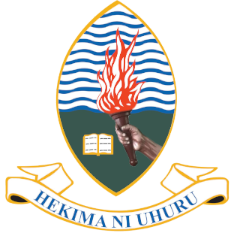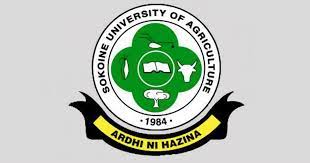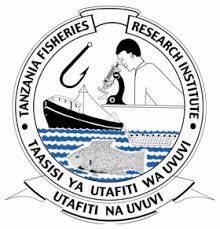Tanzania Profile
In Tanzania, agriculture sector is the main source of livelihood accounting for about 28.7% of Gross Domestic Product (GDP) and employing about 65.5% of the total population (MoA, 2020). The sector contributes about 20% of the total export earnings and provides 65% of all industrial raw materials in the country (MoF, 2018; MoA, 2020). The agricultural sector in Tanzania is largely subsistence and is dominated by smallholder farmers. Women compose the primary source of the agricultural labour force in the country (Mmasa, 2013). A greater proportion of women than men (69.9% vs. 64.0%) work in agriculture (Idrisi, 2018).
Although agriculture is key to the Tanzanian economy, the sector’s annual growth rate is lower than the target of ‘at least 6%’ that African countries committed to through the Comprehensive Africa Development Programme (CAADP). For the past three year (2016 – 2018) the growth of the agriculture sector was at an average rate of 5.3 (MoA, 2020), this is a slightly higher to the 5 percent growth rate that was envisioned when the Agriculture Sector Development Strategy (ASDS) was formulated in 2001. There are several constraints to agricultural growth in Tanzania, the key ones being: i) under investment in agriculture especially for research and development initiatives; ii) inadequate agricultural infrastructure (such as electricity, rural roads, storage facilities, marketing infrastructure and agro-processing infrastructure); iii) inadequate access to agriculture inputs (such as chemical fertilizer, vaccines, improved seeds, animal feeds and artificial insemination (AI) inputs); iv) underdeveloped agro-processing sub-sector which leads to limited value addition; v) poorly integrated markets and poor market access by the agricultural producers; vi) limited access to agricultural finance and high interest rates where financing opportunities exist; v) weak implementation of policies, laws and regulations; vi) limited public investments to the sector; vii) high post-harvest losses viii) low competitiveness; ix) inadequate availability of financial and human resources to implement agriculture projects and programmes; x) weak capacity of producer organisations, and; x) underutilization of the existing irrigation potential (currently, only 5% of the country’s irrigation potential is utilized) (Mmasa, 2013; Timisia, 2014; URT, 2016, BFAP et al, 2018, PMO and MITI, 2018 and FAO and AfDB, 2019).
Tapping the potential in the sector requires a much higher growth rate than what the country has been able to achieve and calls for transformative approaches for addressing the challenges to the sector. These will include substantial change in policy and legal framework coupled with sustained enhanced investments by both public and private sector. Thus, the Government has continuously been improving the policy and strategic frameworks to enhance the development, performance and contribution of the agricultural sector to the national economic growth. The key strategic document guiding the transformation of the sector is the Agricultural Sector Development Strategy II (2015). Similarly, as a step towards implementation of CAADP, the country designed the Tanzania Agriculture and Food Security Investment Plan (TAFSIP) (2011/12 – 2020/21) as a road map for agricultural and rural development. ASDS II and TAFSIP are being implemented through the Second Agricultural Sector Development Programme (ASDP II). ASDP II aims at transforming the agricultural sector by enhancing productivity (of the crops, livestock, and fisheries subsectors), markets, value addition, farmer’s income, food security and nutrition.
Public institutes

Ministry of Agriculture (Tanzania)
Website available in English
Vission,Mission and Core Values Vision To be capable institution of supporting an economically viable and competitive agricultural sectors that contribute into national efforts to improve livelihoods, ensure food security which protecting and sustaining environment. Mission Is to transform and modernise agriculture sectors through promotion of scope of crops, livestock, fisheries and forestry enterprises technological adaption, production, productivity and value addition , and though creation of enabling environment and effective
Tanzania Agricultural Research Institute
Website available in English
The Tanzania Agricultural Research Institute (TARI) was established by the Parliamentary Act No. 10 of 2016 to enhance and strengthen of agricultural research system in Tanzania. TARI is a semi-autonomous body under the Ministry of Agriculture, responsible for all agricultural research activities conducted by the National Agricultural Research System (NARS) in Tanzania.
Tanzania Fisheries Research Institute
Website available in English
Tanzania Fisheries Research Institute (TAFIRI) was established by the Act of Parliament No. 6 of 1980 to promote, conduct, and co-ordinate fisheries research in Tanzania. The idea of establishing TAFIRI came after the collapse of the East African Community in 1977.
Tanzania Forestry Research Institute
Website available in English
Tanzania Forestry Research Institute (TAFORI) was established by Act No. 5 of 1980. Its history dates back to 1893 when the Germans established a 2.5 ha tree nursery near Dar es Salaam . The nursery tested over 270 species for tropical plantations, ornamental and other trees.
Agricultural Related Universities
Sokoine University of Agriculture
Website available in English
Sokoine University of Agriculture's academic business is guided by the university’s vision and missions as well as the Corporate Strategic plan (2016-2021), the latter that spells out plans in keeping with university’s core missions and functions as well as the need to remain competitive.

College of Agriculture Sciences and Food Technology
Website available in English
“To advance the economic and social development in agriculture, livestock, fisheries and beekeeping through effective teaching, research, innovation and knowledge management.”

Mizengo Pinda Cumpus
Website available in English
The Mizengo Pinda Campus College (MPC) is a newly established campus of the Sokoine University of Agriculture (SUA), the campus was named after the retired Prime Minister of the United Republic of Tanzania Hon. Mizengo Pinda
Information Resources



